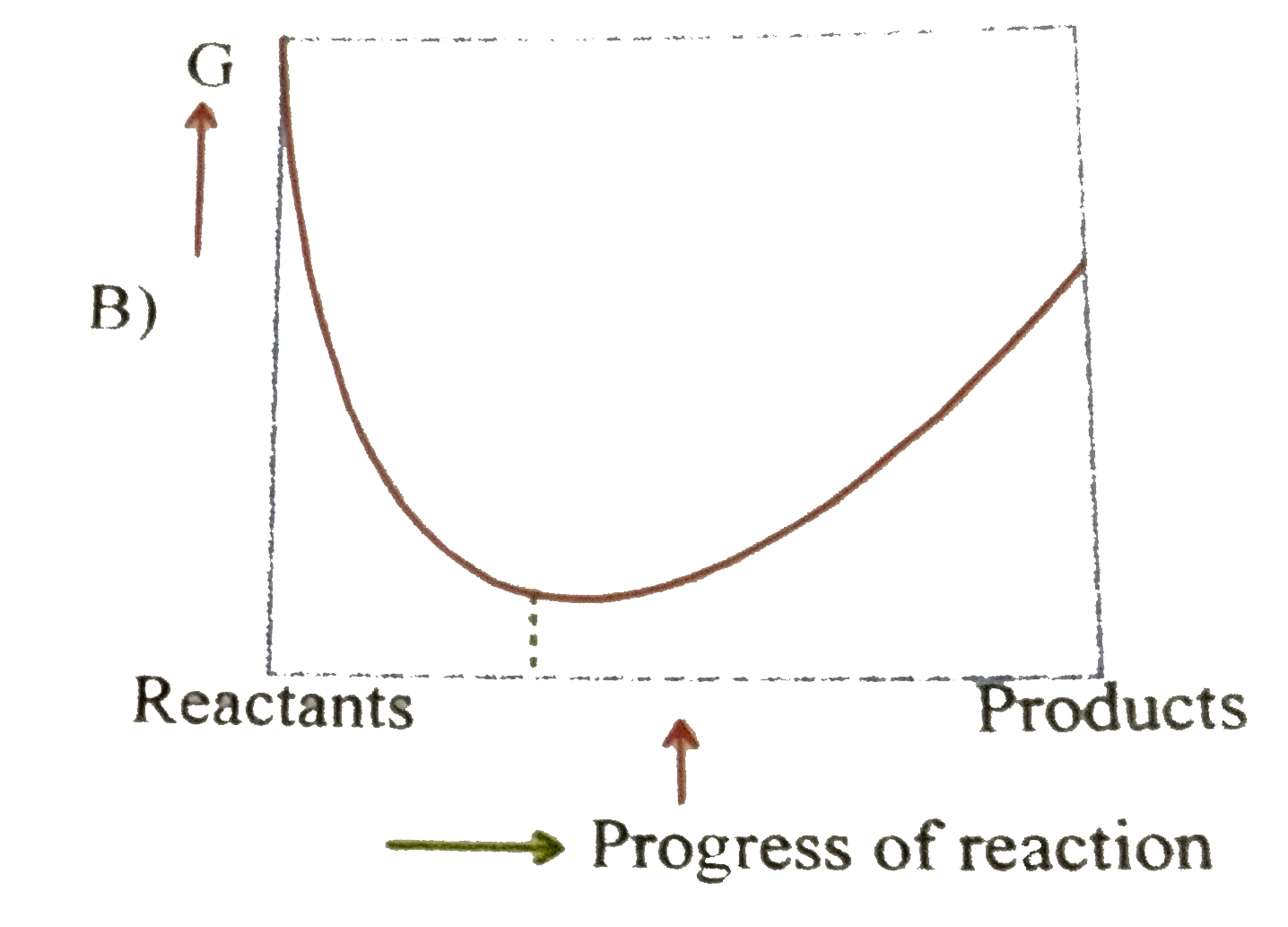For the reaction
The reaction change from spontaneous to non-spontaneoous at the temperature
510 K
450 K
400 K
330 K
The correct Answer is:A
Reaction will be spontaneous above 500 K.
Topper's Solved these Questions
- CHEMICAL THERMODYNAMICS AND ENERGETICSBOOK - MARVEL PUBLICATIONCHAPTER - CHEMICAL THERMODYNAMICS AND ENERGETICSEXERCISE - MULTIPLE CHOICE QUESTIONS (PREVIOUS YEARS ENTRANCE EXAMS)
76 Videos
- CHEMICAL THERMODYNAMICS AND ENERGETICSBOOK - MARVEL PUBLICATIONCHAPTER - CHEMICAL THERMODYNAMICS AND ENERGETICSEXERCISE - MULTIPLE CHOICE QUESTIONS (TEST YOUR GRASP)
50 Videos
- CHEMICAL THERMODYNAMICS AND ENERGETICSBOOK - MARVEL PUBLICATIONCHAPTER - CHEMICAL THERMODYNAMICS AND ENERGETICSEXERCISE - MULTIPLE CHOICE QUESTIONS (Third Law of Thermodynamics)
6 Videos
- CHEMICAL KINETICSBOOK - MARVEL PUBLICATIONCHAPTER - CHEMICAL KINETICSEXERCISE - TEST YOUR GRASP
50 Videos
- CHEMISTRIY IN EVERYDAY LIFE BOOK - MARVEL PUBLICATIONCHAPTER - CHEMISTRIY IN EVERYDAY LIFE EXERCISE - TEST YOUR GRAPS
24 Videos
Similar Questions
For a certain reaction ΔH∘=−224kJ and ΔS∘=−153JK
At what temperature will it change from spontaneous to non- spontaneous ?
View SolutionFor the reaction N2(g)+3H2→2NH3(g)
ΔH=−95.4kJandΔS=−198.3JK−1
Calculate the temperature at which Gibbs energy change (ΔG) is equal to zero. Predict the nature of the reaction at this temperature and above it.
View Solution
Knowledge Check
For the reaction between CO2 and graphite:
CO2(g)+C(s)→2CO(g),
Δ=170kJandΔS=170.JK−1.The reaction will be spontaneous at:A300KB500KC900KD1100KFor a reversible reaction at constant temperature and at constant pressure the equilibrium composition of reaction mixture corresponds to the lowest point on Gibbls energy Vs progress of reaction diagrams as shown. At equilibrium Gibbs energy of reaction is equal to zero.

For a reaction
M2O3/4(s)→2M(S)+12O2(g)ΔH=30KJ/mol and ΔS=0.07KJ/mol/K at 1 atm. The reaction would not be spontaneous at temperatureA>428KB>428KC<100KD>100KFor the reaction between CO2 and graphite,
CO2(g)+C(s)→2CO(g),ΔH=170kJ and ΔS=179JK−1
At equilibrium, the reaction will be non-spontaneous atA300KB500KC900KD1100K
For the reaction N2(g)+3H2→2NH3(g)
ΔH=−95.4kJandΔS=−198.3JK−1
Calculate the temperature at which Gibbs energy change (ΔG) is equal to zero. Predict the nature of the reaction at this temperature and above it.
View SolutionFor the reaction N2(g)+3H2→2NH3(g)
ΔH=−95.4kJandΔS=−198.3JK−1
Calculate the temperature at which Gibbs energy change (ΔG) is equal to zero. Predict the nature of the reaction at this temperature and above it.
View SolutionDetermine whether the following reaction is spontaneous under standard conditions.
2H2O(1)+O2(g)→2H2O2(1)ΔH∘=+196kJ,ΔS∘=−126JK−1
Does is have a cross - over termperature ?
View SolutionFor a certain reaction, ΔH=−50kJandΔS=−80JK−1, at what temperature does the reaction turn from spontaneous to non-spontaneous ?
View SolutionFor a certain reaction ΔH=−50kJ and ΔS=−80jK−1, at what temperature does the reaction turn from spontaneous to nonspontaneous?
View Solution
